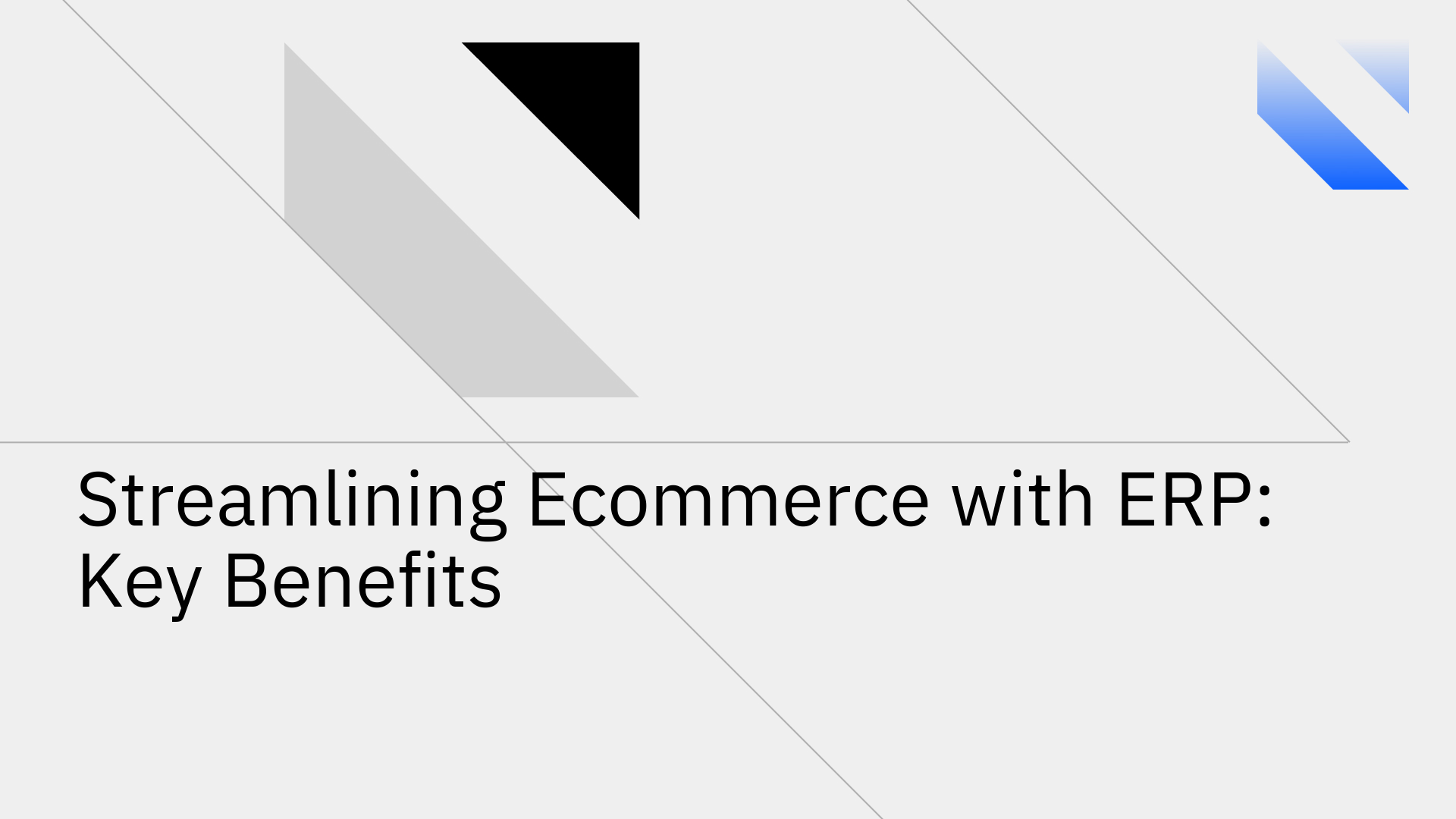
As an ecommerce business scales, the operational complexity of managing disparate platforms for sales, inventory, and finance becomes a significant technical challenge. Relying on separate systems, such as Shopify for the storefront and manual spreadsheets for the back office, leads to data silos, manual reconciliation errors, and process inefficiencies. Enterprise Resource Planning (ERP) systems address this fundamental problem by creating a single, centralized data hub that unifies business functions for streamlined, productive operations.
This guide explores how integrating a powerful ERP like NetSuite with your ecommerce platform transforms operations, the critical features to look for, and how to overcome common integration challenges.
ERP software integrates mission-critical business processes into a single, coherent system. For an ecommerce business, this means connecting customer relationship management (CRM), inventory, and supply chain management (SCM) to provide real-time visibility and control over the entire operational lifecycle.
Key components typically include:
Integrating an ERP with your ecommerce platform provides comprehensive, real-time insight into business operations, enabling proactive management and rapid response to market demands. This system integration is the foundation for meeting and exceeding customer expectations.
The primary technical and operational benefits include:
An ERP provides a centralized platform for all customer data, creating a unified view of every customer by consolidating information from all touchpoints, including website activity, order history, and support interactions. This allows ecommerce businesses to move beyond generic marketing and deliver highly personalized communications and offers, significantly improving customer loyalty and lifetime value.
The core challenge in multi-channel ecommerce is maintaining accurate inventory. An ERP like NetSuite, when properly synced with a platform like Shopify, provides real-time visibility into stock levels across all sales channels and physical locations. This accurate data feed enables automated, intelligent decisions about stock replenishment and allocation. The system automatically tracks inventory movements, generates reports, and initiates purchase orders based on predefined thresholds and historical sales data, eliminating the risks of overstocking or, more critically, stockouts that lead to lost sales and diminished customer trust [1].
ERPs deliver end-to-end visibility into the supply chain network. This allows ecommerce businesses to monitor and analyze every stage of the supply chain, from raw material procurement to final-mile delivery. By automating critical processes like purchase order generation and shipment tracking, an ERP reduces manual workloads and minimizes the potential for human error, ensuring a more resilient and efficient supply chain.
By automating routine, repetitive processes, ERP systems eliminate manual data entry and reduce the associated errors. This frees up technical and operational teams to focus on strategic, value-adding tasks. As a result, ecommerce businesses can handle higher transaction volumes with greater efficiency, improving overall productivity and reducing operational costs.
Selecting the right ERP is a critical decision that dictates operational capability and long-term growth potential. The evaluation must extend beyond the ERP's features to how it will connect with your existing technology stack.
Begin by performing a thorough assessment of your current operations. Identify specific pain points, process inefficiencies, and technical limitations. Define your short-term operational objectives and long-term strategic goals to create a clear set of requirements for your ERP system.
Differentiate between essential and non-essential features. For an ecommerce business using Shopify, must-have features include real-time inventory management, multi-channel order processing, and integrated financial management. Ensure the ERP can support your specific business processes without requiring costly, complex customizations.
Your chosen ERP must be architected to scale with your business. Evaluate its capacity to handle increasing transaction volumes, additional users, and new business units or sales channels. A cloud-based ERP like NetSuite offers inherent scalability, allowing you to add functionality as your business evolves.
Integration is the most critical technical consideration. Your ERP must seamlessly connect with your ecommerce platform, such as Shopify, to facilitate flawless, real-time data transfer. However, achieving this is a significant technical hurdle. Standard point-to-point connectors, custom code, and generic iPaaS solutions often fail to deliver the required reliability and performance. These approaches are frequently plagued by high latency, data conflicts, complex error handling, and a lack of true bi-directional synchronization, creating a brittle and high-maintenance integration architecture.
This is precisely the problem Stacksync was engineered to solve. Stacksync provides a purpose-built, reliable data synchronization solution that ensures real-time, bi-directional data consistency between operational systems like NetSuite and Shopify. With a no-code setup, automated conflict resolution, and enterprise-grade reliability, Stacksync eliminates the complexity and fragility of traditional integration methods. It empowers businesses to connect NetSuite with Shopify confidently, guaranteeing that data across systems is always accurate and up-to-date, allowing your teams to focus on growth, not on fixing broken data pipelines.
NetSuite ERP is a leading cloud-based solution engineered to manage core back-office operations and financial processes. It provides a unified platform for financial management, inventory, supply chain, and real-time analytics, empowering businesses to make faster, more informed decisions. Its robust, scalable architecture makes it an ideal foundation for growing ecommerce businesses.
When evaluating an ERP like NetSuite, focus on the key functionalities that directly streamline ecommerce operations and enhance business efficiency.
Integrating an ERP in an ecommerce environment presents several technical and operational challenges. Proactive planning can ensure a successful implementation.
There are several technical approaches to establish a Shopify NetSuite sync, each with distinct trade-offs:
A real-time, bi-directional sync ensures that inventory levels are always accurate across both systems. When a sale occurs on Shopify, the inventory level is instantly updated in NetSuite. Conversely, when new stock is received in a warehouse and logged in NetSuite, the updated quantity is immediately reflected on the Shopify storefront. This automated process prevents overselling, minimizes stockouts, and eliminates the need for manual inventory reconciliation, directly improving operational efficiency and customer satisfaction [5].
To calculate the return on investment (ROI), quantify the gains from operational efficiencies and compare them to the total cost of ownership (TCO) of the integration solution. Key benefits to measure include: